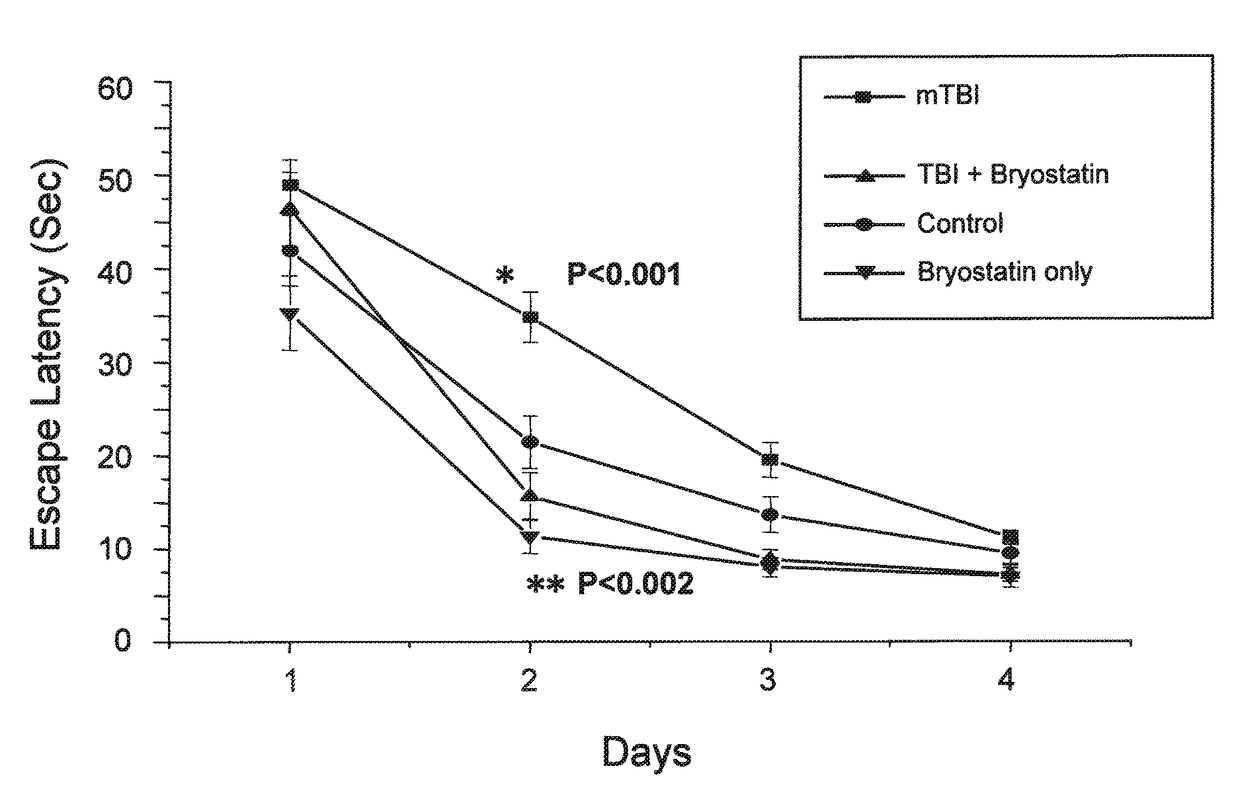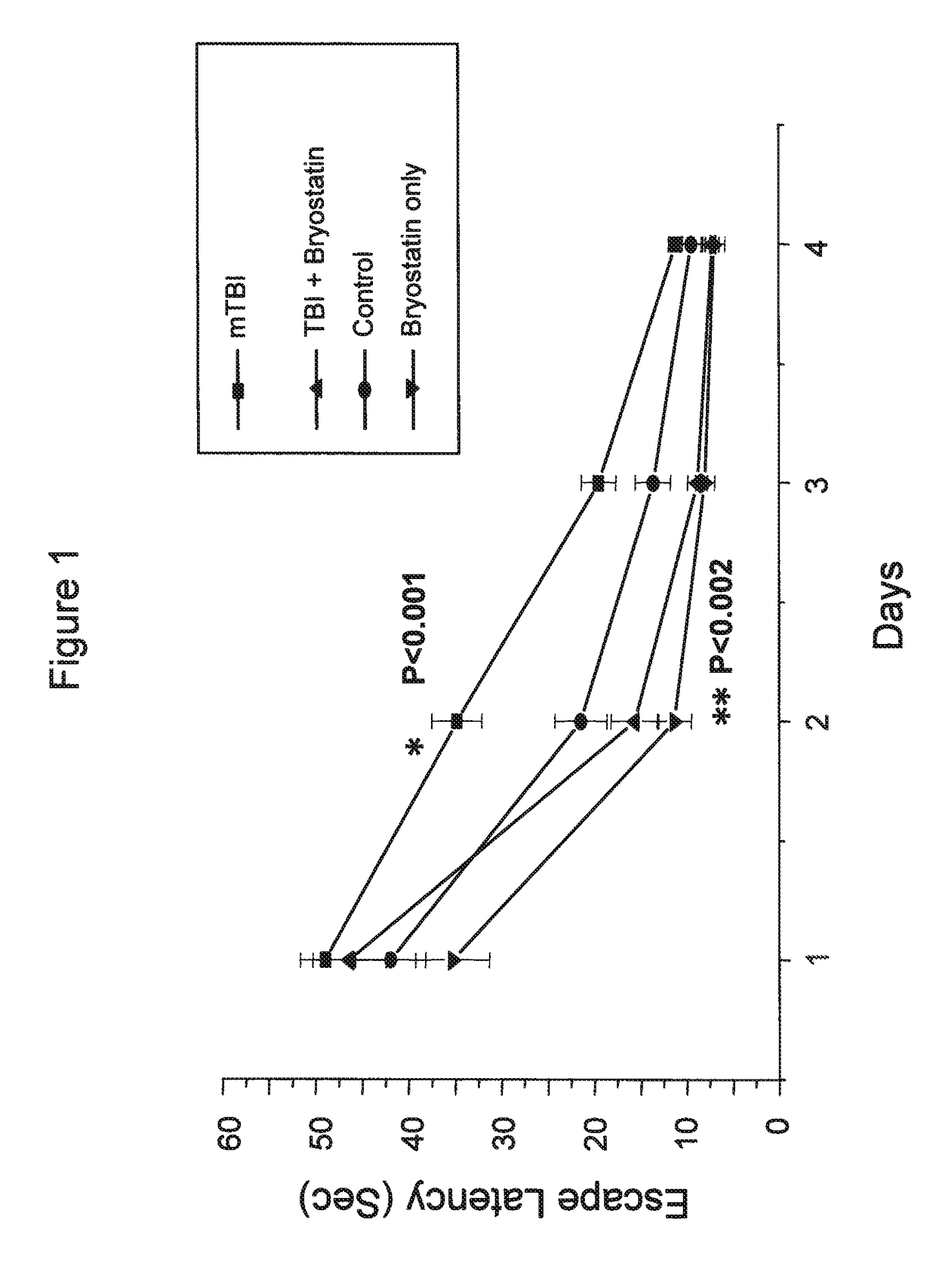Therapeutic effects of bryostatins, bryologs, and other related substances on head trauma-induced memory impairment and brain injury
a technology of bryostatin and other related substances, which is applied in the direction of biocide, drug composition, peptide/protein ingredients, etc., can solve the problems of head trauma, injury may be worsened, and children may be hospitalized
- Summary
- Abstract
- Description
- Claims
- Application Information
AI Technical Summary
Problems solved by technology
Method used
Image
Examples
example 1
Animal Model of Head Trauma
[0060]Minimal traumatic brain injury (TBI) was produced in mice by a concussive event using a 30 g mass. One hour post trauma, the mice received 20 or 30 μg bryostatin per kg doses by intraperitoneal injection. The injections were repeated twice weekly for a total of 5 treatments. The effects on learning and memory of bryostatin treatment in treated animals was tested in the Morris Water Maze.
example 2
Morris Water Maze
[0061]In the Morris Water Maze, animals were allowed to swim in a tank divided into four quadrants, only one of which had a safety platform beneath the water. The platform was removed and the animals were tested for how long they searched the correct quadrant versus the incorrect quadrants. In the passive avoidance procedure the animal remembers the distinctive environment in which a mild electric shock is delivered and avoids it on a second occasion.
example 3
Bryostatin (30 ug / kg) and Treatment of Minimal TBI
[0062]Minimal traumatic brain injury (TBI) was produced in mice by a concussive event using a 30 g mass. One hour post trauma, the mice received 30 μg bryostatin per kg doses by intraperitoneal injection. The injections were repeated twice weekly for a total of 5 treatments. The escape latencies in a Morris Water Maze of mice treated with bryostatin after minimal TBI were compared to animals with minimal TBI, control animals receiving no TBI or bryostatin, and animals receiving bryostatin only. The results are shown in FIG. 1.
PUM
| Property | Measurement | Unit |
|---|---|---|
| mass | aaaaa | aaaaa |
| pressure | aaaaa | aaaaa |
| chemical composition | aaaaa | aaaaa |
Abstract
Description
Claims
Application Information
 Login to View More
Login to View More - R&D
- Intellectual Property
- Life Sciences
- Materials
- Tech Scout
- Unparalleled Data Quality
- Higher Quality Content
- 60% Fewer Hallucinations
Browse by: Latest US Patents, China's latest patents, Technical Efficacy Thesaurus, Application Domain, Technology Topic, Popular Technical Reports.
© 2025 PatSnap. All rights reserved.Legal|Privacy policy|Modern Slavery Act Transparency Statement|Sitemap|About US| Contact US: help@patsnap.com



